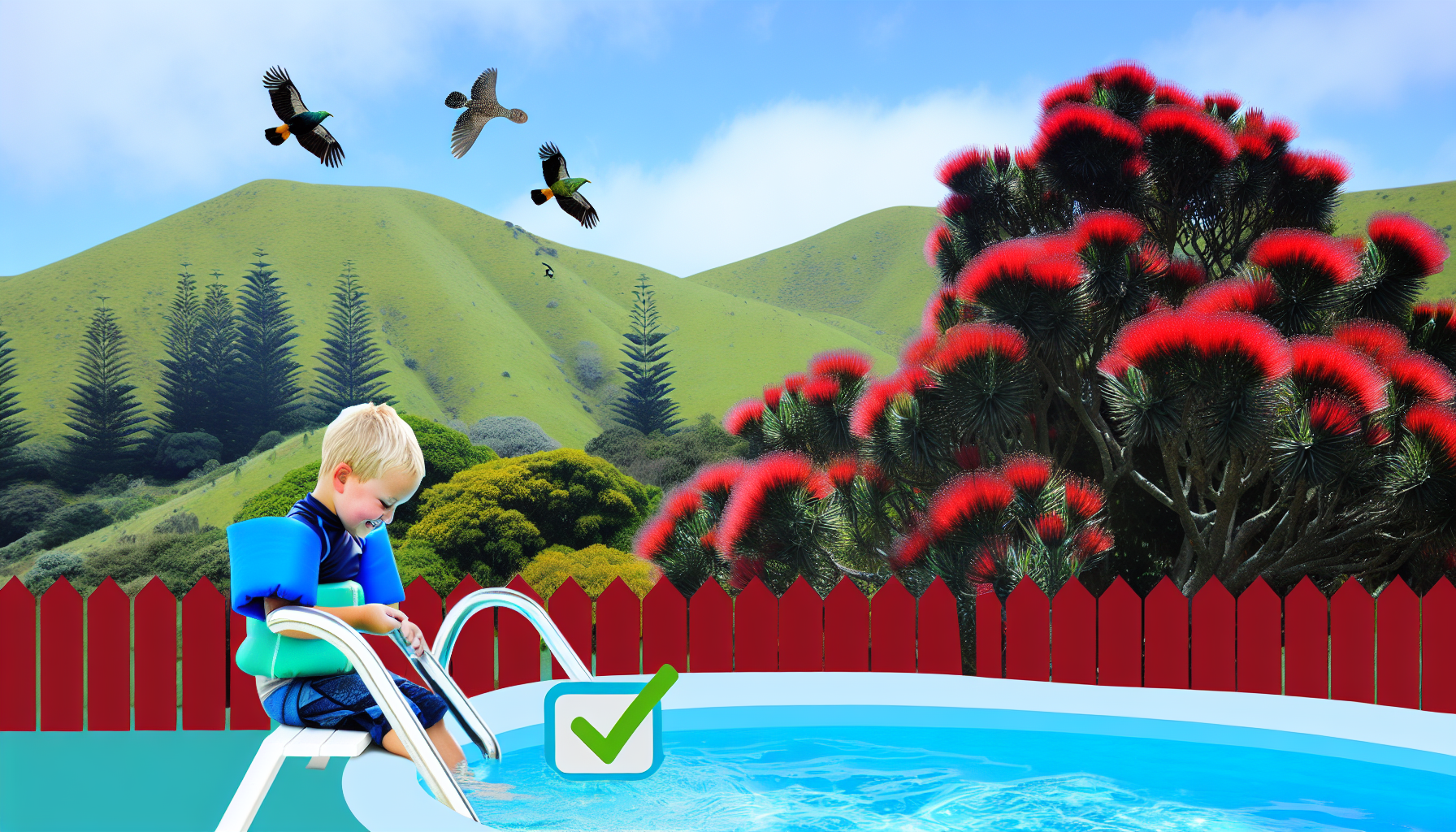Having a backyard pool is great—until you realise how quickly a toddler can get into trouble near water. They move fast, they’re curious, and they have no sense of danger. So, if you’ve got little ones around, keeping them safe needs to be your number one priority. Here’s what matters when it comes to pool safety for toddlers.
Install a Compliant Pool Fence (And Keep It Locked)
In New Zealand, it’s the law to have a compliant pool fence. That means it has to be at least 1.2 metres tall and have no gaps bigger than 100mm. The gate should be self-closing and latch shut at least 1.5 metres above the ground. That stops little hands from reaching up and letting themselves in.
Make sure nothing is nearby that a toddler could climb up on (like chairs, bins, or plant pots). And check the latch regularly—if it’s not clicking shut every time, fix it. If you’re unsure whether your fence meets regulations, check out the Building Performance website for New Zealand’s pool fencing rules.
Supervision Is Non-Negotiable
The number one rule? Never leave toddlers alone near water. Not even for a second. Drowning is silent—it doesn’t look like splashing or yelling. So, if they’re in or near the pool, you need to be right there, within arm’s reach.
If you need to step away for any reason—even to grab a towel—take them with you. It’s that simple.
Use a Pool Cover (But Make Sure It’s Safe)
A lot of people think a pool cover will keep kids out of the water, but not all covers are child-safe. Some can actually trap a toddler underneath. If you’re using one, make sure it’s a solid, lockable safety cover—not just a floating one.
Check out places like Para Rubber for pool covers that are made for safety.
Teach Water Confidence, But Don’t Rely on It
Swimming lessons are great. The earlier kids learn water confidence, the better. But being “water confident” doesn’t mean they’re safe. Even kids who can swim can get into trouble. So yes, take them to lessons (places like Swimtastic offer great toddler sessions), but never assume they’ll get themselves out of danger.
Alarms Can Be a Game Changer
Want an extra layer of security? Pool alarms can help. You can get an alarm for the gate, one that detects movement on the surface of the water, or even a wearable alarm for your child. It’s not a replacement for supervision, but it’s another tool in your safety set-up.
Look at stores like Bunnings or Mitre 10 for pool alarms and extra security options.
Create a “No-Go” Zone
Make it clear to your kids that the pool is not a play area unless an adult is there. Reinforce it constantly. It can also help to set up a physical boundary—something as simple as a gate alarm or a brightly coloured ground marker to remind them where the “no-go” zone starts.
CPR Training—Know What to Do
If the worst happens, knowing CPR can save a life. Every second counts in a drowning emergency. Do a first aid course so you’re prepared. Organisations like St John and Red Cross NZ offer CPR training that covers drowning situations.
The Bottom Line
Pool safety isn’t just about following the rules—it’s about making water accidents nearly impossible. That means fences, supervision, alarms, and constant awareness. Toddlers don’t understand what’s dangerous, so it’s up to us as adults to make sure they’re safe. No shortcuts. No second chances. Keep the pool fun, and keep it safe.


Leave a Reply